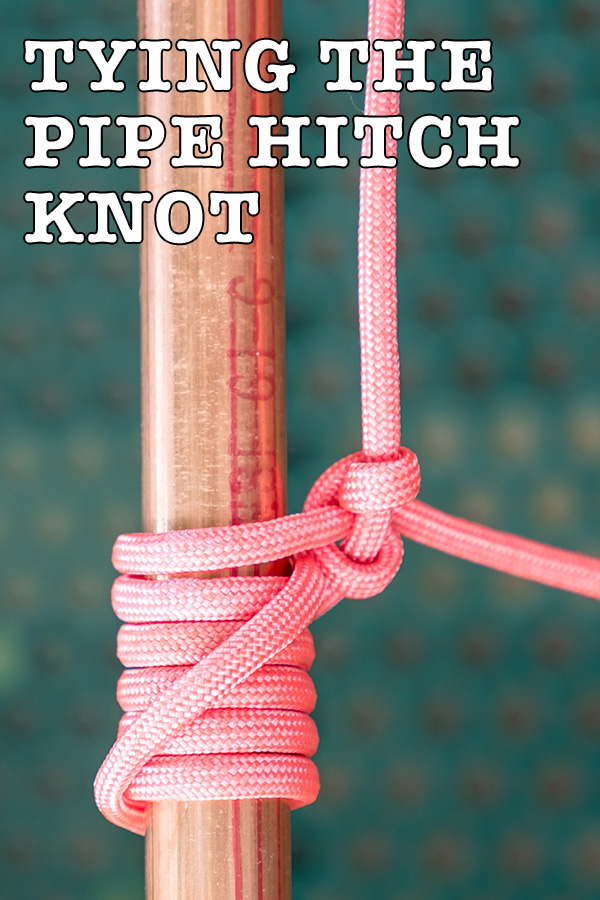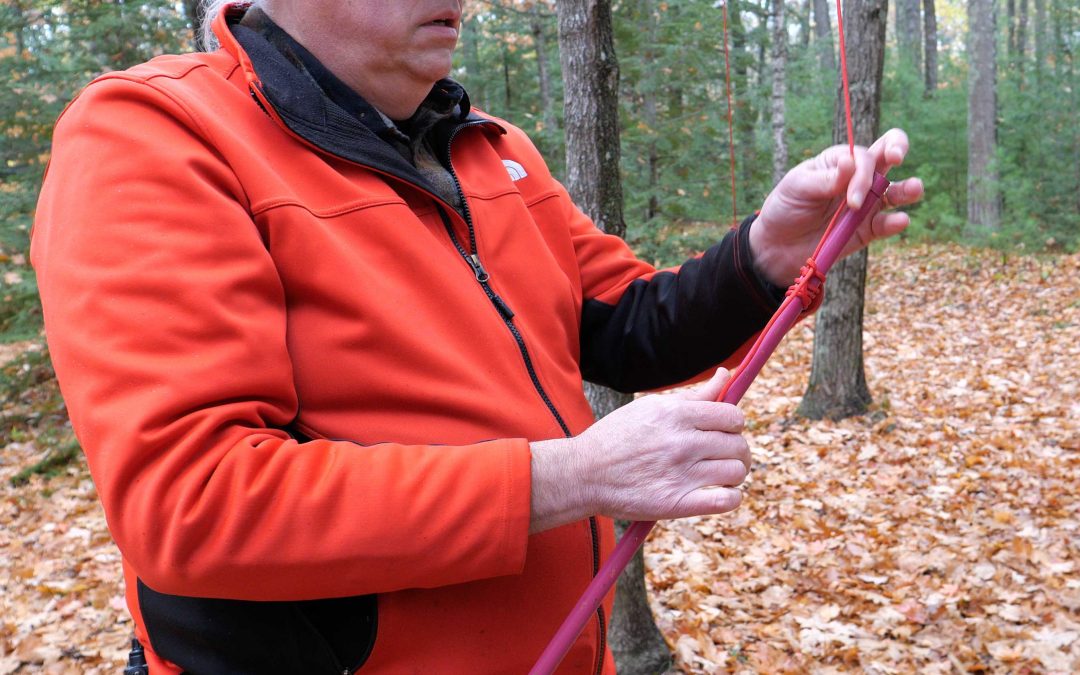A common question I receive is how is the best way to put an antenna up in a tree. Trees may not seem to be an obvious choice for supporting a vertical antenna, but offer a few advantages, like being readily available and they give you the ability to hide your antenna if you live in an area with prohibitive home owners association rules. Or maybe you’re operating in the field and need a temporary antenna support. As long the antenna is clear of tree branches, it will work fine in the tree.
So how to we get the antenna up there? Most vertical antennas are smooth and don’t have any hooks or loops for tying off a rope. The answer is with a simple knot called the Pipe Hitch. The Pipe Hitch is a variation on the timber hitch and is very useful for rigging antennas and other long, slender objects.
So, to tie the Pipe Hitch, take a length of rope and wrap it about four or five times around the object. Now take the traveling end of the rope, bring it back across the wraps, make another wrap at the top and finish with a clove hitch. For extra security you can finish with a couple of half hitches.

As you lift the antenna, this knot will constrict, holding the object securely, even if the surface is smooth. Yet when you release the pressure the knot can also be easily untied. So let’s put our antenna in the air.
Ok, to finish off the install I’ll need to attach the feed line to the connector and finish hoisting the antenna. Since the coax is unsupported, its weight is going to pull on the connection, possibly causing premature failure. So create a drip loop with your coax and zip tie it to the base of the antenna. do whatever you need to take that stress off the antenna.

So the pipe hitch is a great rigging knot, since it can be easily untied, you can also use it for tower work, hauling mast pipes and antennas up a tower. As long as you don’t overload the working weight of the rope, the knot will hold your object.
Want to know more about common knots for ham radio? Check out my other blog post: knots for antennas and support structures.


Thank you for the “pearls of wisdom” your videos provide.
I appreciate being pointed to the use of this knot, but frankly I find your description impossible to follow. What is the “traveling end”? What is the “top”? Where is the clove hitch tied? (Description gave me the impression, around the pipe; illustration, around the rope (which part?)
With all due respect, my impression is that you know the knot well, and kind of “tossed off” this particular post.
I’m not saying I couldn’t take your illustration and description, and figure it out – but i really shouldn’t have to put that much work into it.
I appreciate your work and writings
Christian,
Thanks for your comments. In knot terminology a piece of rope has two parts: the static end and the traveling end. The traveling end is the portion of the rope you use to create the knot. This is the end that you are tying with. The static end is the section of rope that does not move.
I must admit that the text description of the know isn’t the best. It can be difficult to describe something that require spatial manipulation. I recommend that you watch the accompanying video a couple of times, you’ll see how the know is tied and it will all make sense.
Michael